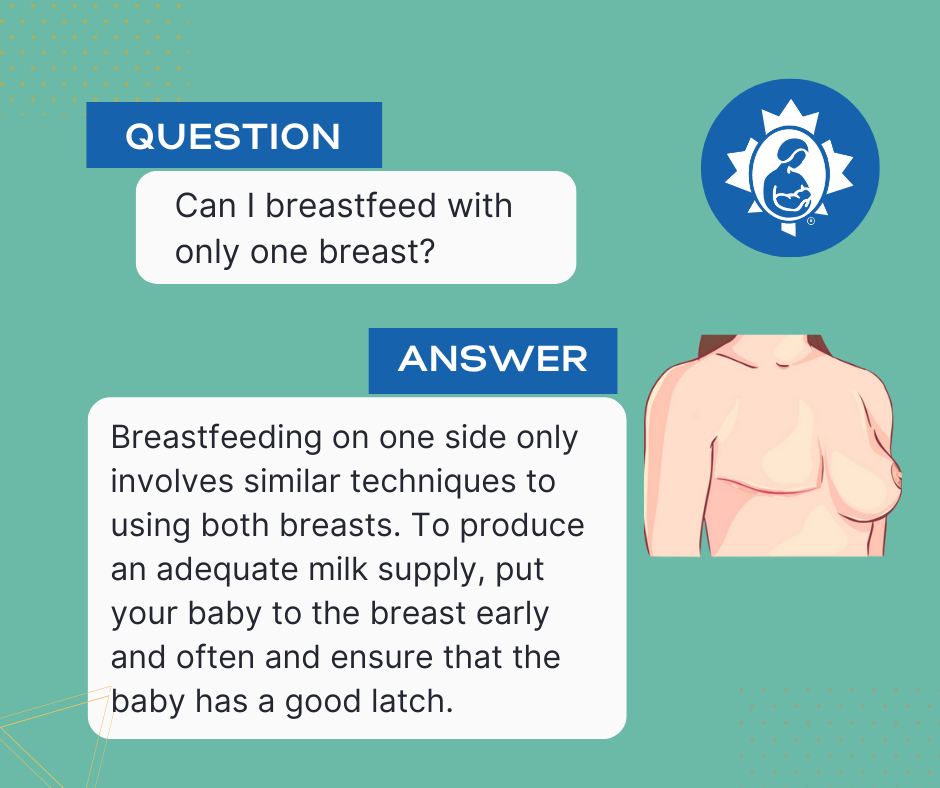
Most people assume that you need to have two functional breasts to breastfeed a baby. For a variety of reasons, some mothers nurse their babies on one side only. People may wonder whether the baby will get enough milk. When you consider that mothers of twins (and more) can successfully breastfeed, it is clear that each breast will produce the amount of milk needed, given the right stimulation.
The most common reason mothers breastfeed from one side only is past surgery for cancer or to remove a benign lump. If the ductal tissue of the breast has been removed or severely damaged, the breast may not produce milk or the milk may not be able to reach the nipple. Other nursing parents feed on one side because of physical issues that make feeding on one side difficult, uncomfortable or impossible. Sometimes a baby absolutely refuses to feed from one breast for some reason. It could be because the flow is slower or too fast on that side. A baby may have a physical issue that makes feeding on that side uncomfortable. (In this case, changing your position may help.) The LLLC information sheet Nursing Strikes contains ideas to encourage your baby back to the breast and some reasons why your baby may prefer one side. Your local LLLC Leader can also help you think of strategies to try.
Breastfeeding on one side only involves similar techniques to using both breasts. To produce an adequate milk supply, put your baby to the breast early and often and ensure that the baby has a good latch. The breast that is not stimulated will, over time, stop producing milk. For more information see Establishing Your Milk Supply and Positioning and Latching.
If you are surprised that breastfeeding is possible with only one functional breast you may be even more surprised to know that mothers have breastfed twins or tandem nursed a newborn and a toddler with only one breast. With knowledge, support and determination breastfeeding mothers can do amazing things! If you have a breastfeeding question and need support please contact your nearest La Leche League Leader.
Please consider supporting LLLC.
Updated July 2022
